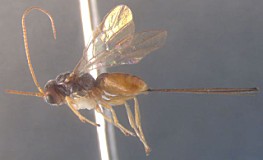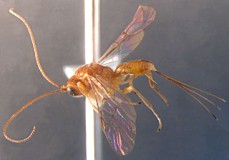F. vandenboschi is a common parasitoid of tephritid pests of starfruit,
Averrhoa carambola, in Malaysia, where apparent inverse density-dependence has been documented (
Chua 1993).
Ramadan et al. (1991) examined the influence of various fitness parameters on male mating success in this and other species that are routinely reared in Hawaii for tephritid biological control. Ramadan et al. (1995) also looked in detail at the reproductive biology of this species. Vargas et al. (2002) published useful studies on comparative demography of this and other species introduced to Hawaii.
A fair amount of additional literature is available on this species.



